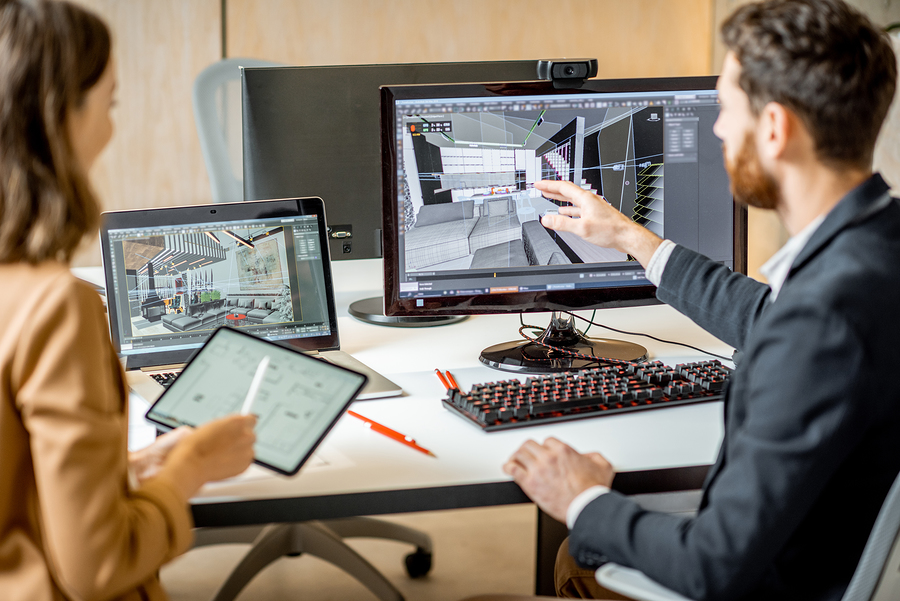
Let’s face it, the traditional style office design is dead. It has been for some time because it’s no longer suited to help clients deliver what their customers expect. That’s not to say offices are obsolete or it’s time to abandon one of your market segments because technology’s role in business has enabled remote workforces to work anywhere, any time. You could argue the new way people work has heightened the importance of smart workspace design. Employees are more digitally connected than ever, yet more physically dispersed and despite their physical separation, interaction is still one of the most critical elements of their day. However, designing modern office spaces to support clients’ needs can be tricky because there’s often more involved than many assume.
You can help empower your clients to drive success and innovation by knowing how to strategically incorporate digital collaboration solutions into your designs. But first you must know how to scrutinize the characteristics of the evolving workforce and your client’s work environment to inform how you choose the right digital tools to sustain their digital transformation.
At Casaplex, we’ve worked closely with architects to marry great designs to innovative audio, video, lighting, and shading systems that help clients grow. Follow along as we give you our playbook for designing modern office spaces with digital collaboration in mind.
Before we dive in though, let’s take a deeper look at why smart digital collaboration design is so important.
Understanding the Importance of Smart Digital Collaboration Design

How we define the workplace has shifted significantly over the last decade. Yes, largely because technology has helped many companies rethink collaboration, better foster creativity, boost productivity and sharpen their competitive edge. But also because organizations, at their core, operate differently. Companies are now generationally and culturally diverse, built upon a broad mix of traditional and non-traditional roles and made up of teams that have struck a new balance between work and personal life.
You need to approach digital collaboration with a plan and strategy. Designing an office to support today’s complex, multi-faceted workforce requires a thoughtful strategy. While at a fundamental level, digital collaboration is about using digital tools to connect dispersed audiences, the implementation of these tools requires organizations to significantly readapt. A potential solution must help make the company better as a whole, not dismantle it.
Therefore, for a digital collaboration project to be successful, you need to carefully evaluate a client’s current processes/procedures, their expected activities and outcomes for meeting spaces, and the sizes of their workspaces to ensure your design and its goals are aligned with all stakeholders.
So, let’s get into how you can conduct this evaluation.
How to Design Modern Workspaces That Support the Way Your Clients Work,

Thoughtful planning is the only way to design a space capable of removing all the friction from your client’s collaboration process, whether during an all-hands meeting or a small huddle-room session. When evaluating the digital collaboration needs of your clients, here’s how you can discover what capabilities are going to be required:
1. Create a Rundown of Your Clients Collaboration Needs
The initial step in designing a modern workspace to support digital collaboration is to identify every key function and process that makes up a client’s organization. In your early planning, ask the client and yourself a variety of questions such as:
- How many remote workers are there in the company?
- On average, how many meetings do teams have every week?
- How many people usually attend?
- Do you use your meeting spaces to meet with end-clients?
- What’s the typical style of meetings/?
- Are meetings broadcasted/streamed?
- What is the interaction between attendees like during meetings?
- Do meeting rooms serve multiple purposes?
The answers to these questions will help you find opportunities to improve workflow or communication for your client. You’ll most likely find there are other collaboration challenges unique to your clients that need to be considered. For example, you may work with a company that has autonomous teams of 4-5 members that hold weekly huddle sessions, but during the sessions, they must all gather around one laptop to view meeting content. If that’s the case, it’d be wise to draft huddle rooms, appropriate to the typical meeting size, with wall-mounted displays capable of being titled so teams can better view materials and present to each other.
2. Review Your Clients Current Digital Collaboration Tools
You want to review all the digital collaboration tools your client currently uses. Start by checking meeting spaces to determine the age/quality of any technology in the room such as video teleconferencing systems, displays, projectors, microphones, presentation devices, or interactive lights. If the technology hasn’t been updated within the last 5 years, or even at all then digital collaboration is bound to fail. If any of the current tools do seem useful, you need to figure out how they can be optimized to boost your client’s productivity.

To examine how these tools are serving employees ask questions such as:
- How reliable are these tools to support collaboration?
- How difficult is it to operate these devices?
- Can employees use them to seamlessly share or collaborate?
- How difficult is it to troubleshoot technical issues?
- Is every device being used?
- Do these tools support the company’s meeting styles?
- Are these tools able to integrate with digital collaboration tools used by end-clients?
These answers will help you steer the client towards the right digital tools that can create a seamless experience to help remove points of frustration during meetings.
3. Consider the Size of Meeting Spaces
You know how critical it is to be precise with measurements to avoid snags in the construction process. Well, the same concerns apply to designing a workspace with collaboration in mind. Every digital collaboration component you choose must agree with the size and dimensions of the space. If not, you’ll hinder your client’s productivity and ability to deliver. So before you start drawing up that large conference room with a stage for TED-talk style presentations, seriously consider the size of your client’s office so audio and visuals are equally distributed to all participants. While this conference room style is a great idea for your design, you need to show that there will be enough speakers throughout the room so all audience members can hear evenly. Likewise, if you wanted to include a visual element, you’d have to represent that there’s a sufficient number of cameras and displays at the right size to be featured in the meeting space.

4. Avoid the Common Pitfalls of Digital Collaboration (over-complicated controls, wireless everything, not recommending ongoing maintenance, etc.)
Lastly, in your designs, make sure you’re avoiding the common pitfalls of digital collaboration. It’s much easier to derail a digital collaboration project than you may think. That’s why you must be diligent in your design choices. As you review your design, make sure you’ve stayed clear of these common misconceptions that can cause digital collaboration project to fail:
- Everything needs to be wireless: Just because its wireless doesn’t mean it’s reliable. Some collaborations are going to need a wired connection to ensure meetings deliver.
- Digital collaboration is going to be costly: You can be cost-effective about your technology choices. Digital transformation doesn’t have to break the bank
- You’re going to have to start from scratch: There’s no need to tear down any walls. Many digital collaboration solutions can be retrofitted to accommodate the specifications of a client’s current space.
- Purchasing new equipment is the only way to upgrade: As we mentioned above, you need to review which current collaboration tools can still be useful in your client’s new workspace design. A system already in place doesn’t necessarily need to be completely removed to perform an upgrade
- Digital collaboration is a one and done job: Ongoing maintenance will be required to ensure the system is always prepared to deliver.
This final step in your design planning process is crucial. You can’t imagine the number of organizations we’ve encountered who’ve had to completely redo a digital collaboration project because these pitfalls weren’t taken into consideration. The key here is to remind yourself that if a certain solution or digital tool starts to feel overcomplicated, take a step back and ask if it aligns with the current processes and future goals of the company.
There’s a new normal in the way your clients’ organizations work. That means you need to have the design skills to transform their offices into modern workspaces equipped to effortlessly connect teams whether across the table, at home, or on the other side of the globe. But remember, it’s not just about the capabilities a digital tool can offer. Creating a consistent, frictionless collaboration experience starts with a concise strategy. Now it’s time to get to work!
Are one of your clients ready to bring their office into the 21s century? Let’s have a conversation.
Digital Collaboration
Please reach out to talk about how we can help you make your clients delighted with how they collaborate!
